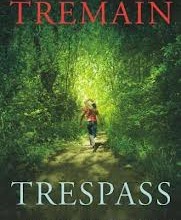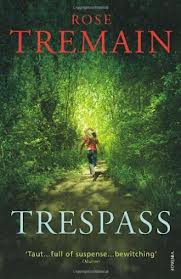Book review: Trespass by Rose Tremain

Some years ago I won the entire Orange shortlist in a competition. As a result, I read my first Rose Tremain, The Colour, and have continued to read her ever since. Not when a book comes out, but sporadically, as I prefer to read most literary novelists, when somebody mentions a particular novel to me, or when serendipity drops a book into my hands. This month it was Trespass. I did try this novel about a year ago, and it didn’t sit well enough with me for me to continue past the first three chapters, but when it was presented to me again, in the form of a conversation about what has happened/is happening/will happen to rural France, I took it from the shelf of failed reads (note, failed reads, not failed novels, I’m fascinated and horrified by the hubris that allows a single individual to say if a book has succeeded or failed based on their individual opinion of it) and tried again. This time I did get through the initial section, although with a pretty big balk for a couple of days when my subconscious decided to bury the book under a bunch of papers and pretend it had mislaid it, and once I did, I was rewarded with a complex, mutedly painful novel about the effects of age and self-deception. The biggest character in the book is the landscape of the Cevennes: not an area I know well, and not much like the part of France I do know best – the Ariege. But there is a similarity: both regions are only hospitable to those who adapt stringently to the territory mapped out by the land and even the smallest attempt to flirt with change is usually met with failure: physical, economic or moral. Tremain demonstrates this rule of the countryside with an unflinching microscopic focus that never rises above the intimately personal: one character inspects trees for signs of a fatal disease, while another hides a house repair to sell the property to a self-indulgent Brit. A sister harbours madness but fears her brother more than her own mind, while her brother thrives on the chaotic playing out of his own disturbed thinking onto the territory of his home and land, enjoying the effect his depredations produce on his passive and confused sibling.One foreign resident hides all her feelings and hopes to endure, while another insists on change, alteration and ‘improvement’ and splashes his feelings over the reality in front of him like a forger creating a fake Old Master on a mediocre but historically appropriate canvas. It’s by design that Anthony Verey gives up his London life to try again in France, where his sister provides a tenuous anchor to ‘reality’. It’s also by design that his sister, Veronica, has created a drought garden, after being admonished by the local mayor on the wasteful use of water in the original garden she, and her lover, Kitty, built in the unyielding landscape. The first garden mirrors their surface relationship: a pretty and well-maintained veneer over an inhospitable terrain – the second shows the reality: an association based in limited resources and stunted expectations. Even the second garden barely survives the siege of summer in the Cevennes and as the characters coalesce around their spoken desires and unspoken fears, violence on every level is perpetrated by the siblings on each other, and on themselves, in carefully calculated attempts to wring satisfaction from failed lives, or at least the appearance of a satisfaction that could serve to bolster the self-esteem of individuals who have given up, or never possessed, the ability to seek an honest happiness. The novel is not so much multi-layered as involuted: the opposite of a nautilus, demonstrating the shrinking down of love, lust and ambition to the cold, hard clinker of self-satisfaction at any price. It’s elegant, well-plotted and neatly fitted to the chosen scope of its delivery. It’s not a novel with the elegiac sadness of The Colour, nor suffused with the rich romanticism of The Way I Found Her, but like one of the writers whom she says influenced her—William Golding—Tremain’s precise delineation of the failure of life in an inhospitable place is a masterwork in fascination with unlovely characters. And once again I loathe the cover. It’s almost a denigration of the material of the book featuring, as it does the little girl whose story at most provides the wrap of the prologue to the denouement and the one landscape that runs counter to the prevailing theme of the narrative. Also, said little girl does not look at all, to me, like a transplanted Parisian. But my reaction to cover art is usually unhappy, unforgiving and unlikely to be typical, so let’s leave it at that.



Recent Comments